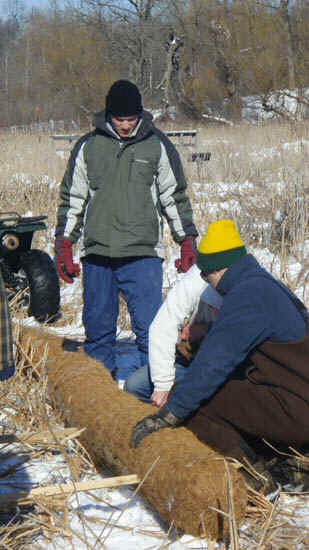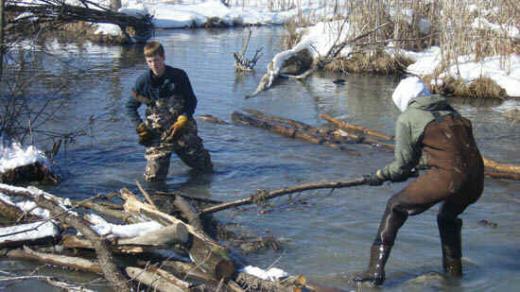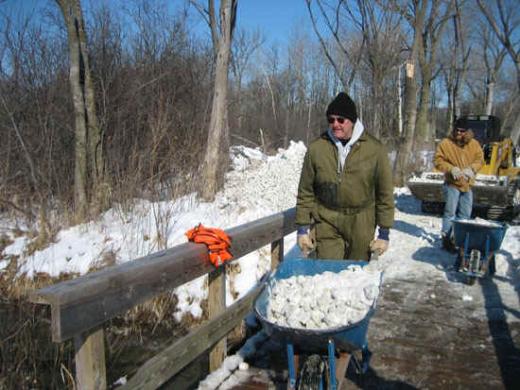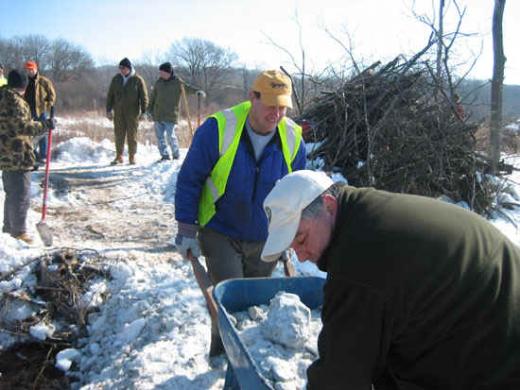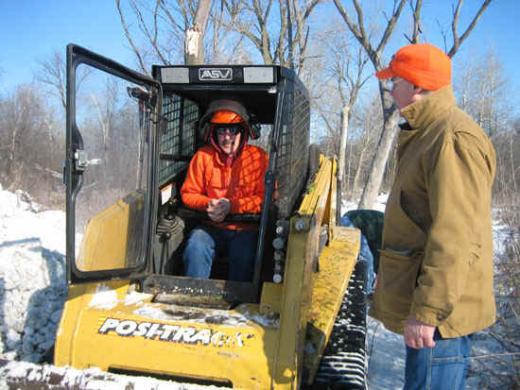Scuppernong River Workday
On February 23, 2008, over 30 volunteers from SEWTU, along with our good friends the Gary Borger Chapter of TU, and the Wisconsin Department of Natural Resources, turned out to work in sub 10 degree temperatures at the Scuppernong River in the Southern Unit of the Kettle Moraine state forest in southeast Wisconsin. The Scuppernong River is a great coldwater resource within our Chapter area, and one which has a great deal of potential for restoration and improvement work.
On this workday, and under the guidance of the WDNR, our volunteers split up into two crews. The first crew worked installing "biologs," which are giant, rolled tubes of coconut fiber. The biologs are installed in part in order to narrow the stream channel, and in part to create overhead cover for coldwater species. Volunteers dug out and removed accumulated silt, backfilling behind the installed biologs. As a result, the stream channel is now narrowed, increasing velocity and hopefully removing additional sediment, deeper, and has overhead cover for fish.
The second crew used 3-4" aggregate, carted by hand using wheelbarrows, to close off three intrusive entrances into the Scuppernong River. These entrances are from a warm water marl pit operation. The marl pit is, for lack of a better term, giagantic, and constitutes a significant warm water body, which until our work had been directly connected to the coldwater Scuppernong River. The aggregate was installed by volunteers in order to create earth levees separating the two water systems. The hope is that the earth levees will stop warm water species (such as pike and bass) from invading the coldwater river, and from feasting upon its trout population.
At the conclusion of the workday, SEWTU volunteers enjoyed a provided chili and bratwurst lunch. All in all, this was a successful workday, and a great chance for SEWTU to work on one of our Chapter area's most viable coldwater resources. It is our hope that this workday leads to future workdays with the WDNR on the Scuppernong. Moreover, this was an incredible workday, drawing members from all across southcentral and southeastern Wisconsin, despite less-than-ideal conditions. In the end, this workday shows the huge potential of SEWTU volunteerism, and our commitment to the resource.
Special thanks goes out to the WDNR for their excellent advance efforts, in order to make this workday a reality.









